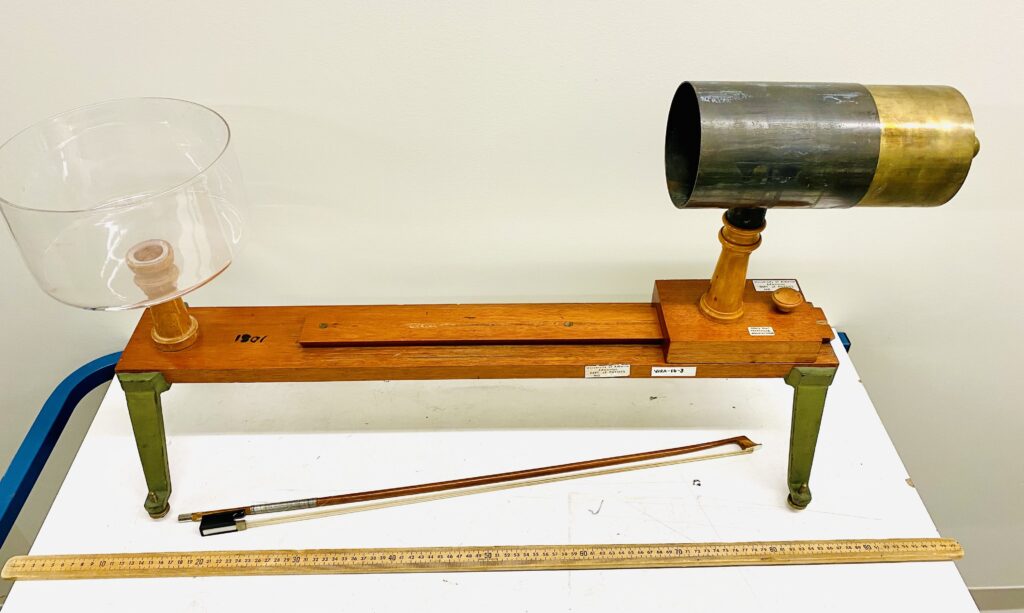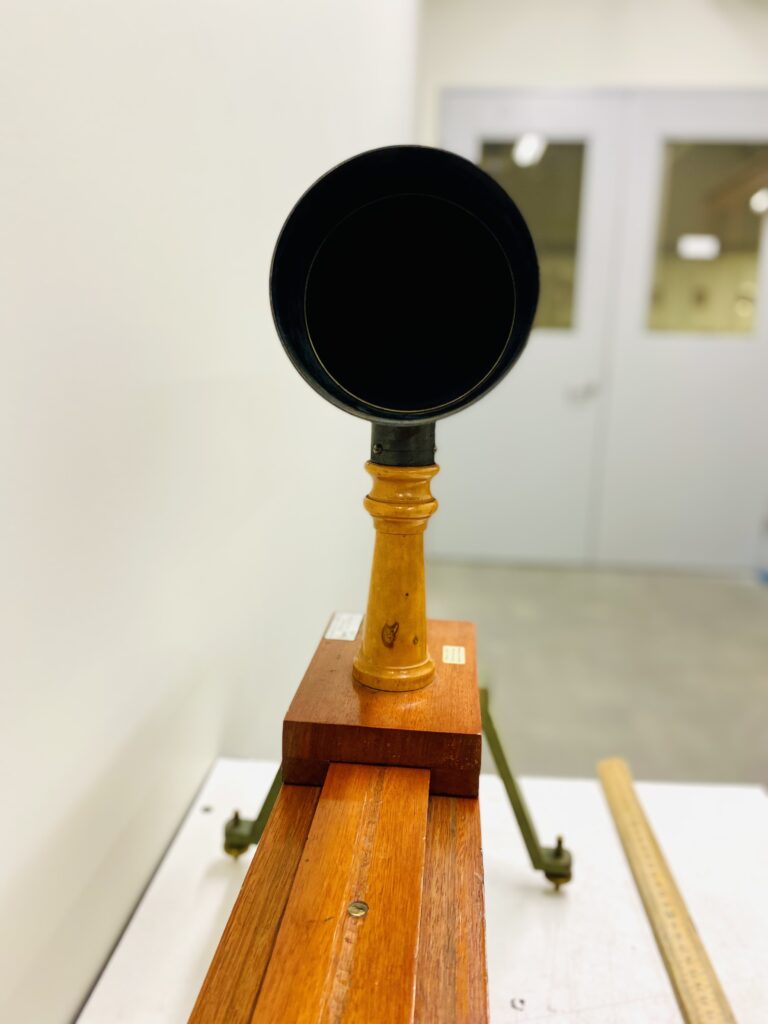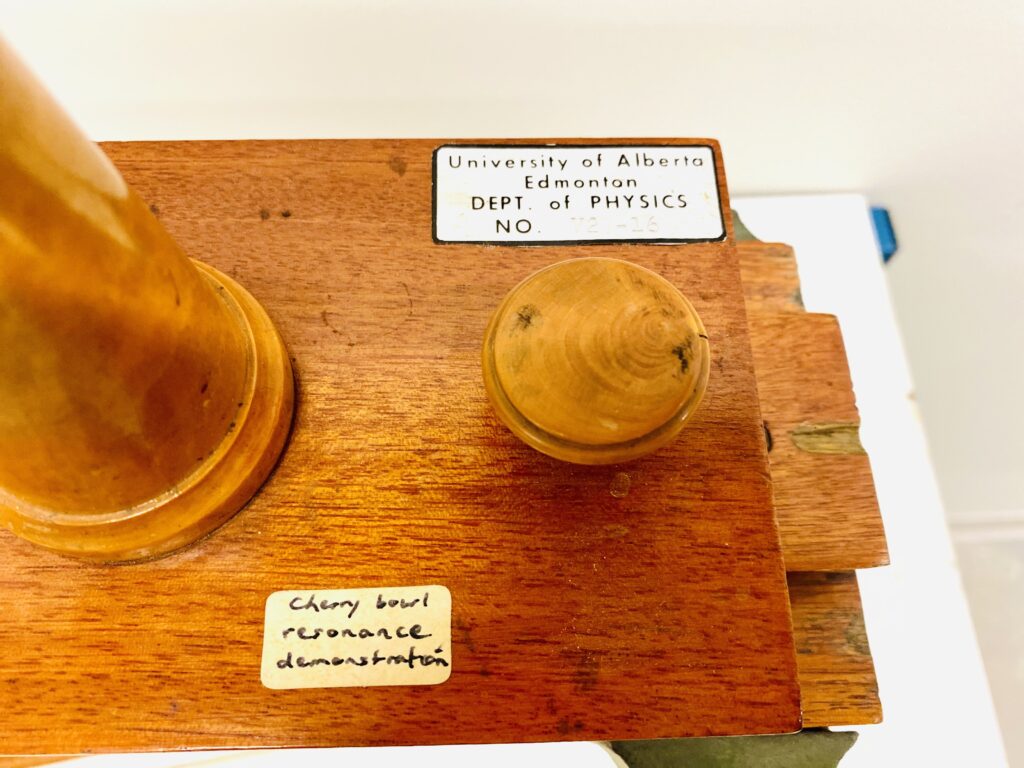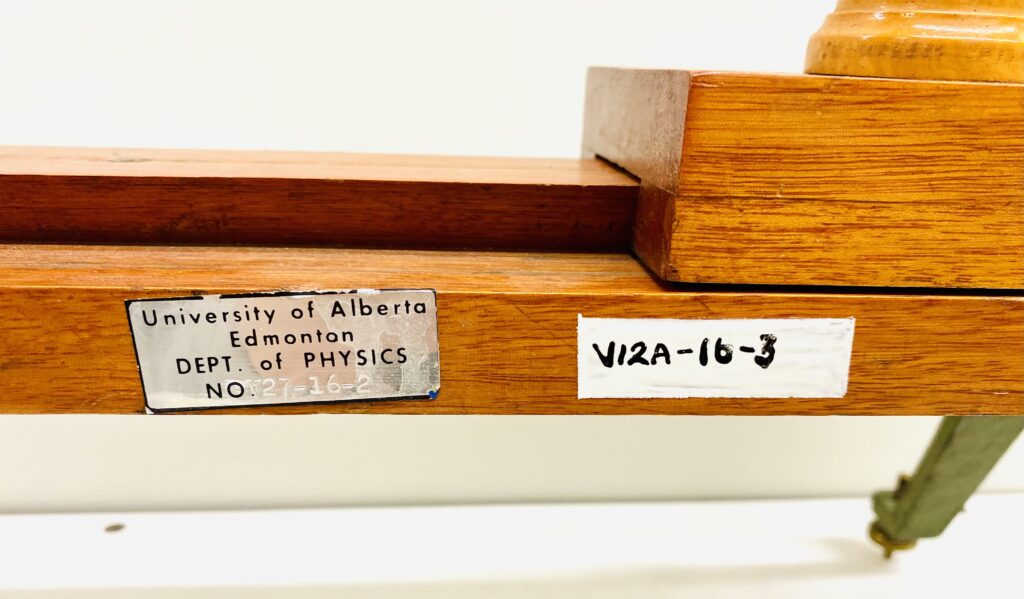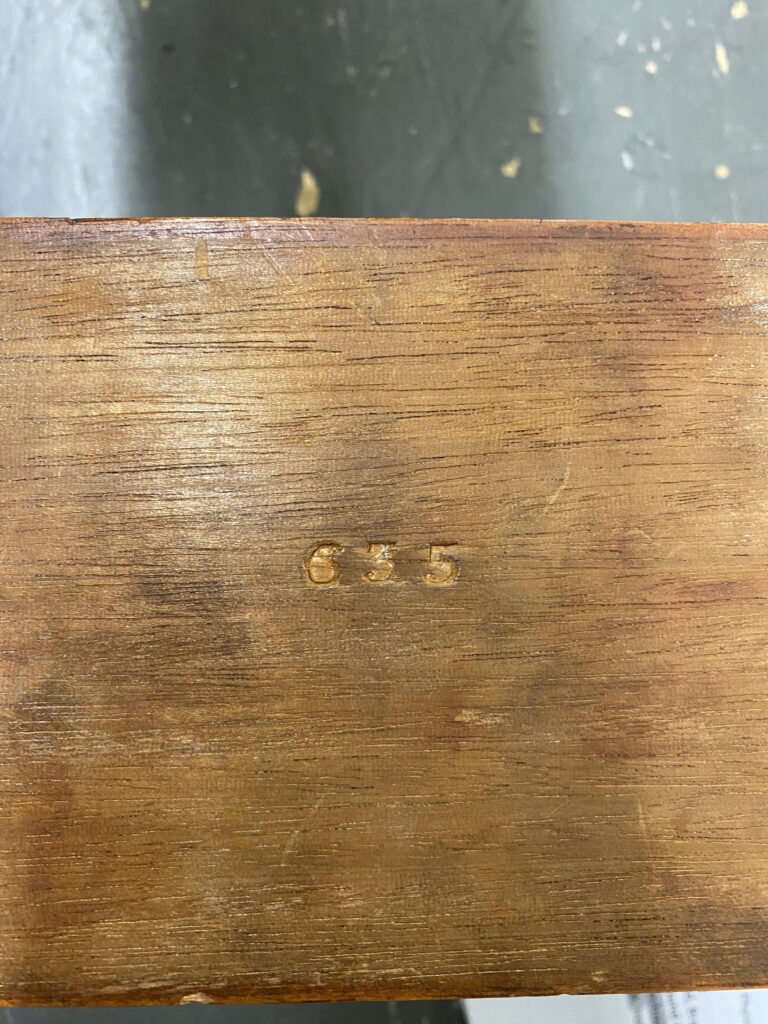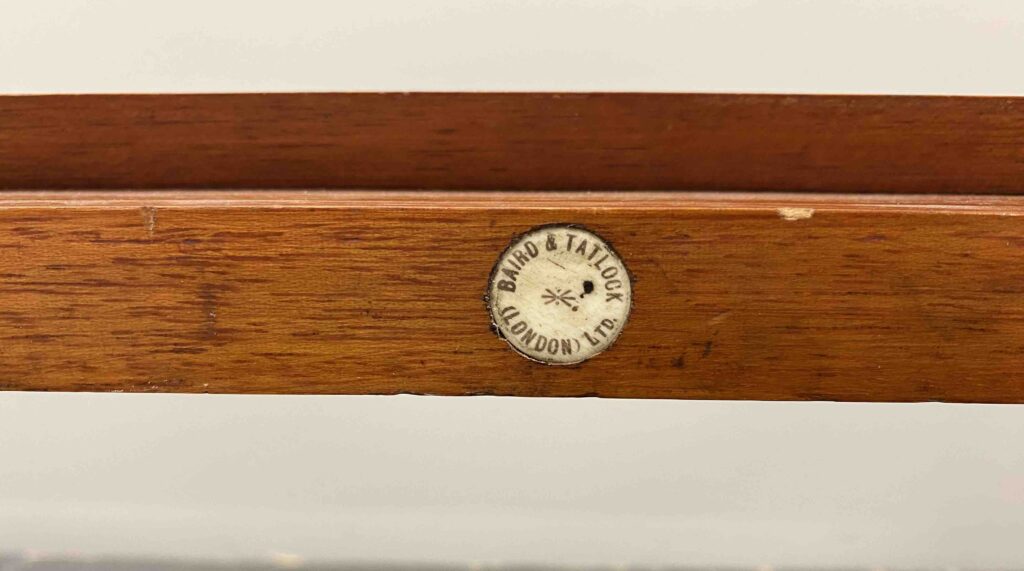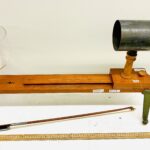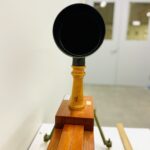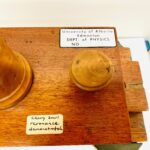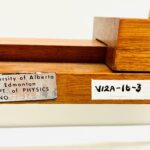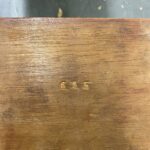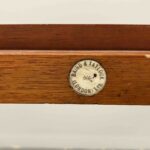Artefacts
Cherry Bowl Resonance
Cherry Bowl Resonance
Labeled on the edge of the wooden stand frame with the Department of Physics, University of alberta. with the number V27-16-2. To the right side, there is a white label with V2A-16-3 written in marker (presumably this would be the much earlier Accession Number).
The top-facing panel of the wooden stand has the same label from the University of alberta Physics Department with the Accession Number in the upper right corner, and a white piece of paper with the words “cherry bowl resonance demonstration” in the lower right corner.
On the left side of the wood stand panel, below the cherry bowl is the word 1901 written in a paint-like.
The back of the base has a circular marker embedded in the wood that is written BAIRD & TATLOCK LTD. (LONDON)
The number "635" is engraved on the bottom of the wooden base.
Description
This is a variation of Savart’s resonance bell where the bell is sounded and the resonator is moved back and forth to resonate with specific frequencies. In this case, locally called the Cherry Bowl Resonance demonstration, the bowl is filled with various levels of water. The bow is applied to the glass bowl, standing waves are created and then the operator moves the resonator back and forth to pick up the frequency.
The Concepts Behind the Resonance Bowl
The vibration is caused by rubbing the edge of a cherry bowl with your hand or violin bow to create a vibration in the bowl. In Physics, we call this resonance, where one vibrational frequency causes the natural vibrational frequency of another object to increase. The vibration causes two phenomenons to occur:
- The bowl will create a specific frequency, depending on the water level .
- In addition, standing waves are created in the water illustrating an interference pattern called a Chladni pattern. Standing waves are produced by the addition of two identical waves traveling simultaneously in opposite directions through any elastic medium. These waves will constructively and destructively interfere with each other as they pass one another. The resulting composite wave from the addition of these two waves will form a standing wave at the edge of the bowl. The standing wave that is produced sets up four areas of maximum vibration called antinodes, these are areas in the water that “spout” and cause the water droplets to jump off the surface. There are also four areas where minimum vibration occurs and these are known as nodes. These nodes show very little water rippling while the antinodes show maximum water rippling.
The resonator on the right side gives rise to pressure waves in the air, which are reinforced by the resonator and perceived as sound.
See also: Glass harmonica (glass armonica), and Savart’s Resonance Bell
Dimensions
Wooden stand — Length: 76 cm; Width: 12 cm; Height: 28 cm;
Cherry Bowl — Caliber: 20 cm; Height: 15 cm;
Resonator — Length: 30 cm; Caliber: 11 cm; Height: 28 cm;
Condition: Fair condition
© 2015 – 2026 Humboldt-Universität zu Berlin

